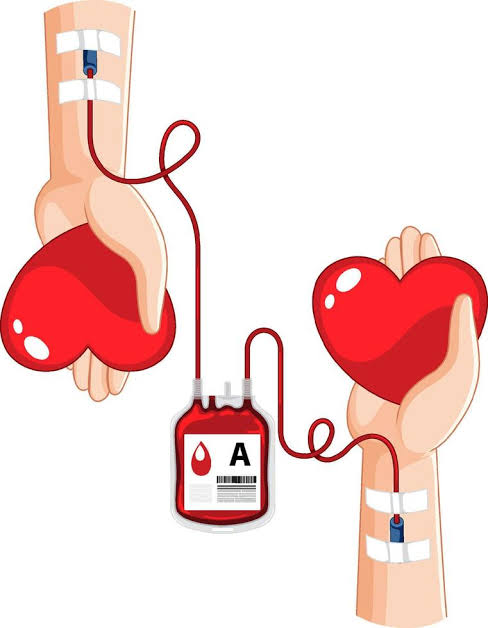WORLD BLOOD DONOR DAY: LET THE NEEDLE IN, AND SAVE A LIFE

Blood, the red sticky fluid that exits blood vessels when the skin is punctured? No. Well, I mean yes. But I like to think of it as a sacred fluid that runs through the crannies of life’s vessels—veins, arteries—breathing life into every corner of our being. And within every drop of this sacred fluid, lies a shred of hope, strength and gift that only we the living can give.
The history of gifting life (blood donation) started in the late 1600s when blood was first transfused from dogs to dogs, and later lambs to humans. This was banned due to unprecedented reactions. Then finally from humans to humans, but with a 50/50 chance of success. However, the discovery of three different human blood groups – A, B and C (later changed to O) by Austrian physician Karl Landsteiner in 1900 was a huge leap forward for blood transfusion and won him the Nobel Prize in Medicine.
Approximately 118.4 million donations are collected annually; an impressive number. But statistics have also shown that despite this whopping number, only 50 percent of people in need of blood get it. World Blood Donor Day was established by the WHO in 2004 to honour the birthday of Karl Landsteiner. This day—14th of June—is marked not only to raise awareness about the need for blood donation, but to celebrate the generosity of every donor contributing to the life-saving movement, and invite more donors to save more lives every year.
Research shows that more than 1 million people every year are diagnosed with cancer for the first time, globally. Many of them will need blood particularly during chemotherapy. Also, over 38,000 blood donations are needed every day. This highlights the critical need for more donors. However, many people hold misconceptions about blood donation. Some assume that they are ineligible, or that they will come crashing down with debilitating reactions if they participate. However, extensive inquiries, precautions, and screening are carried out to guarantee the safety of every donor. Some of the eligibility criteria for blood donors include:
- Donors must be between 18-65 years of age, although some countries condone 16-17 years.
- Donors must weigh not less than 50kg.
- Donors must be In good health; no infections, or critical health conditions, including cancers.
- Donors must not have had a tattoo drawn in less than six months before donation.
- Donors must not have irregularities in pulse rate, and other cardiovascular disorders.
- Donors must have an interval of at least 8-12 weeks between donations for whole blood (this interval is shorter, if only a part of blood such as plasma is donated)
Blood is used as sustenance and treatment in a wide variety of illnesses, after separation into its different components. Red blood cells are given to people with blood disorders (such as sickle cell disease), in chronic anaemia and blood loss due to accidents or surgery. Platelets are used in some cancer and surgical patients to stop bleeding. Plasma is used in liver failure, infections and serious burns to provide clotting factors and immunity. Whole blood is usually administered to patients with life threatening injuries.
Besides the feeling of satisfaction you get from saving a life with every donation, letting out a pint or more of blood from your body comes with an array of benefits. These include:
- Reduced chances of having a heart attack. A study shows that blood donors are 88 percent less likely to suffer from a heart attack.
- Reduction in weight. A single blood donation can help lose almost 650 calories, which is equivalent to jumping rope for 50 minutes.
- Prevention of cancer of the colon, lung, liver, oesophagus, stomach.
- Improvement of the immune system.
There is a wide array of compounds that try to mimic its functions—iron, erythropoietin analogues, plasma expanders, antifibrinolytics—but there is absolutely no substitute for blood. The average time spent for every blood donation is about 40 minutes—a very brief time in comparison to the lifelong impact on the lives of the people who need it. The theme for this year’s World Blood Donor Day is “20 years of celebrating giving: thank you blood donors!” We cannot appreciate enough the bravery of every donor who has given another human being a chance to live. And if you’re one of the many that are yet to embark on this journey of giving life, we hope you muster the courage to be a hero, let the needle in, and save a life!
Oladele Iriniyenikan
References
Tatia S.- Vitalant contributor. 2022, July 19. History of blood donation. Vitalant. Vitalant.org
Blood safety and availability. Who can give blood? World health organisation(WHO). who.int2024
Cedars-Sinia. Facts about blood donation. cedars-sinai.org





One Comment